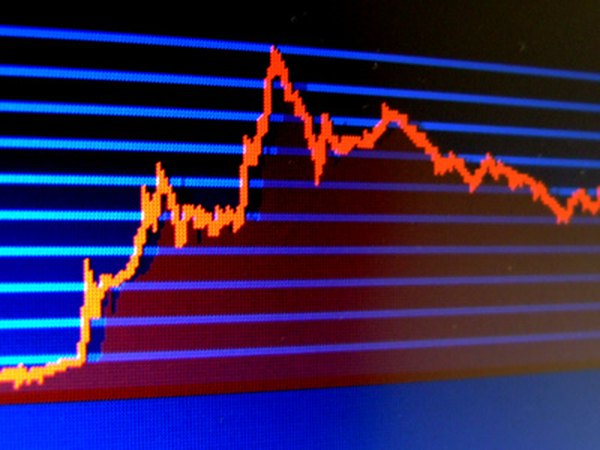Valuing a Bond vs. Valuing a Stock
Know your stock and bond values before buying or selling.
stock market analysis screenshot image by .shock from Fotolia.com
Investors may profit from bonds, stocks or a combination of both in their portfolios. It is important to know how to value each type of investment, because different factors determine the value of each. You can seek the best price if you know those factors. Be sure to keep the method for valuing a bond separate from your method for valuing stocks, because the two methods are not interchangeable.
Bond Values
A bond is affected by three primary factors. The first is the coupon interest rate. This is simply the percentage amount the bond pays in interest. The company or organization issuing the bond sets this interest rate. The second factor is the time to maturity. Bonds with long maturities, such as 30 years, will not pay back the original investment for a long time, whereas bonds with short maturities, such as five years, offer the investor his original investment back in a relatively short time. Bonds with short maturities tend to be valued higher for this reason. The third factor affecting bond values is fluctuation in interest rates. If interest rates rise above the rate your bond pays, investors will not place a high value on your lower-interest bond.
The P/E Method of Valuing Stocks
You can value stocks by comparing the price (P) to the company’s earnings (E). To do this, you must know the average P/E ratio for the industry the company is in. Many financial sites publish the current P/E ratio for each industry. Multiply the industry P/E ratio times the earnings per share (EPS) on your stock. Financial sites commonly publish EPS figures for each stock. Industry P/E times your stock’s EPS equals the stock price you should pay. You may pay a premium if you think the EPS is likely to go up.
Valuing Dividend Stocks
If a stock pays a dividend, divide the dividend by the current market price, and you will know the expected percentage yield on your investment in this stock. The value of the stock may rise or fall depending on how attractive that percentage yield is. If interest rates rise, for example, and investors can get a better rate of return on bonds or other investments, your dividend stock could drop in price. If interest rates drop, however, your dividend stock could rise in price. In addition, if the stock increases its dividend, the price will rise.
Rule-of-Thumb Method for Stocks
This method requires an estimate of future earnings per share for the stock. Multiply future earnings times 10 (assuming a desired 10 percent return), and you arrive at a price the stock may be worth. Note that future earnings are an estimate at best, and in some cases might better be called a guess. This accounts for the rise and fall of stock prices. No one really knows what future earnings will be. You can use analyst estimates as your guide, but don’t think of these as infallible.
References
Writer Bio
Kevin Johnston writes for Ameriprise Financial, the Rutgers University MBA Program and Evan Carmichael. He has written about business, marketing, finance, sales and investing for publications such as "The New York Daily News," "Business Age" and "Nation's Business." He is an instructional designer with credits for companies such as ADP, Standard and Poor's and Bank of America.

